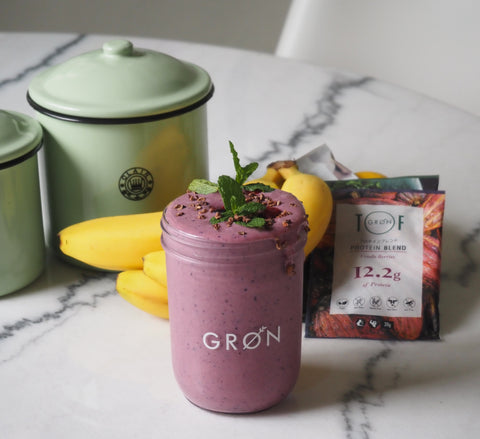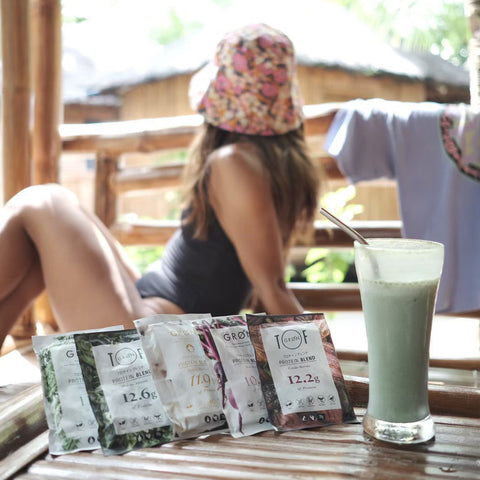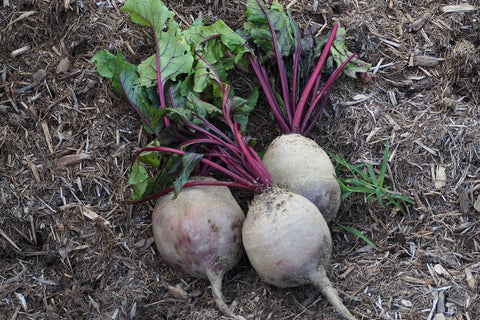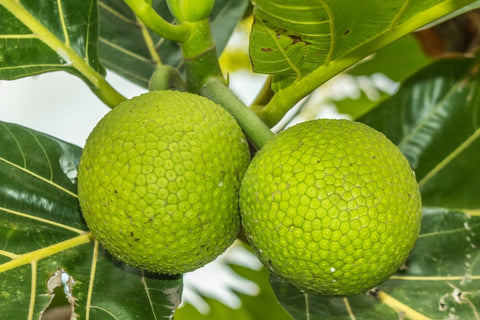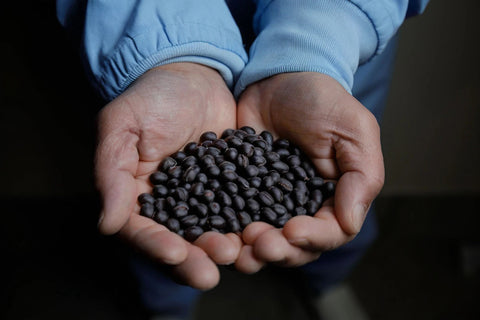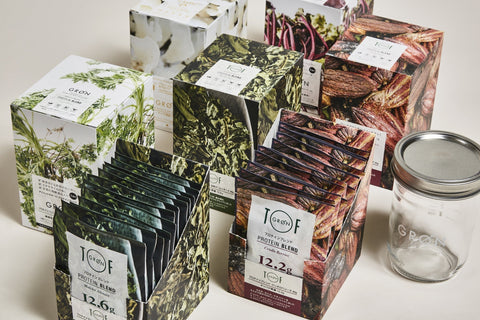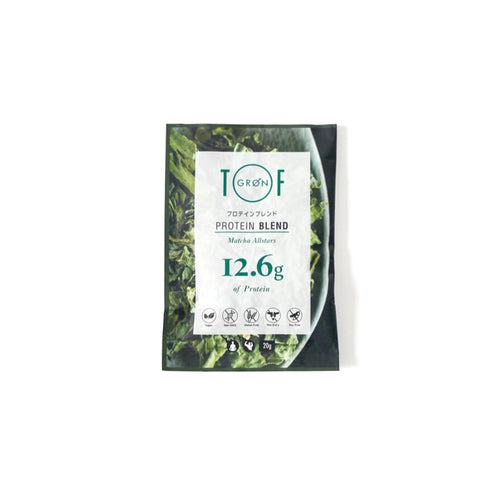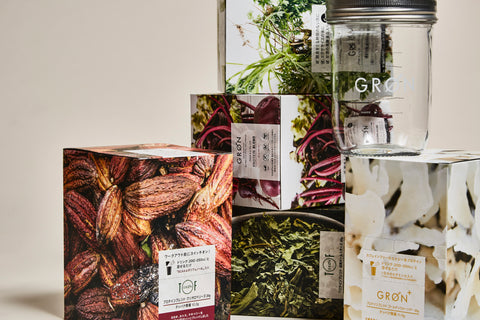About Oriental Medicine (Ayurveda Edition) ~ Nutritionist's Column Vol.58
It's been a while, but following on from last time's article on Chinese herbal medicine, this time I'd like to talk about Ayurveda.
About Oriental Medicine (Chinese Medicine Edition) ~ Nutritionist's Column Vol.53
What is Ayurveda?
Ayurveda is a traditional Indian medicine that is said to be the oldest in the world and has a history of 5000 years.
The word is derived from the Sanskrit words "Ayus" (life) and "Veda" (knowledge, learning, truth), and means "the wisdom of longevity."
We value a healthy lifestyle that is in harmony with both the body and mind, and the idea of preventive medicine, and we place emphasis on dietary habits (food is medicine) as well as health methods (yoga and meditation).
It is a preventive medicine that involves knowing and understanding the state of your own mind and body, and healing yourself by achieving a state of harmony in both mind and body.
The concept is comprehensive and can be incorporated into health, beauty, and relaxation.
These include tongue brushing, nasal irrigation, ear massage, breathing techniques, oils, spices, and herbal teas, but food is considered to be a particularly important keyword.
Recently, the Ayurvedic food scene has expanded, from restaurants incorporating Ayurvedic ingredients to accommodation and travel plans where you can experience Ayurveda.

The three "doshas"
In Ayurveda, three life energies called "doshas" are considered the basis of one's constitution, and each person has a different balance of these energies.
Although everyone has all three doshas, everyone is born with a different energy balance, with most people having a dominant one or two doshas.
This balance changes depending on the situation and the season.
To do this, it is necessary to know and deepen your understanding of your own inherent energy balance and adjust the way you spend your daily life.

Now let me explain about the three doshas.
1. Vata: Energy that contains the elements of "sky" and "wind"
Characteristics: Cheerful and lively, loves change, is curious, light, fast, active, has dry hair and skin, and is prone to cold.
Body type: Thin, but has no stamina and tires easily.
Diet for Vata Dominant People:
I tend to run out of energy.
Avoid raw vegetables and cold foods as much as possible, and eat warm meals that are cooked or fried in oil.
When eating, it is important to eat slowly and relaxed, without rushing.
Meal example:
Foods that are easy to digest, such as hot pot dishes, soups, and stews, are ideal.
Ripe, juicy fruit or fruit juice are also good choices.
It is also recommended to consume plenty of spices such as ginger, pepper, cinnamon, and nutmeg to cheer up your body from the inside.
Foods to avoid are dried foods such as raw vegetables, dried fruits, and frozen foods.
Vata is easily thrown off balance, so avoid eating too much of any recommended food.
2. Pitta Energy containing the elements of "water" and "fire" <br data-mce-fragment="1">Characteristics: Passionate, strong appetite, adventurous spirit, sharp intellect, hard work, leadership, strong digestive ability, fine-grained skin, tendency to be oily.
Build: Medium build and body temperature. Feels very hungry.
Diet for Pitta Dominant People:
They often have a strong appetite, but are prone to digestive disorders.
Ayurveda emphasizes balance, and so sweet, bitter, astringent, heavy and dry tastes are considered good.
It is also recommended to avoid foods with hot properties and spicy spices.
Meal example:
We recommend adding the refreshing spices of cumin and coriander, and green vegetables such as broccoli, bitter melon, asparagus, arugula, spinach, and bell peppers, as well as sweet fruits such as apples, berries, and grapes.
Foods to avoid include foods that are high in salt, sour, or spicy. Avoid alcohol, garlic, chili peppers, and other pungent foods.
3. Kapha Energy with the elements of "earth" and "water". Characteristics: Calm, slow, cool, moist, stable, heavy, gourmet, patient, deep love, sturdy bones, fair skin.
Body type: Stocky and plump. Moves slowly, has stamina and endurance.
Diet for Kapha Dominant People:
Because their digestion is slow and they tend to gain weight easily, it is important to be careful about the amount and content of their meals.
It is important to take your time to eat meals that use spices that activate the metabolism and warm the body, and to eat stir-fried or heated meals that emphasize bitter, astringent, and spicy flavors.
Meal example:
Focus on bitter leafy greens, herbs, warm vegetables and spices (ginger, red pepper, pepper, coriander), especially in the evening.
We also recommend beans, light curries such as those from South India, and steamed vegetables.
Foods to avoid include dairy products, oily foods, and foods high in salt.
Some salons will diagnose you and tell you your type, but it is important to understand that you do not get caught up in having just one dosha; rather, you have all three doshas in different proportions, and the balance is different for each individual.

The concept of Agni
Another concept in Ayurveda is "Agni."
Agni refers to the digestive system and power.
In the classics of Ayurveda, it is said that "all disease arises from a decline in agni," and it is believed that all diseases are caused by the body's inability to properly digest the food we eat. It is therefore believed that restoring normal digestive function and a healthy digestive system is very effective.
When the energy of agni is weak and we are unable to properly digest the food we eat, toxic residues called "ama" are believed to build up in the body. As these toxic residues accumulate, the flow of energy through the body and mind becomes poor, ultimately manifesting in the form of illness.

Food recommendations in Ayurveda
So how should we put this into practice?
Here are some examples of dietary guidelines recommended in Ayurveda.
1. Eat at the same time every day, in a comfortable and relaxed environment, with good posture and a calm mind, and always sitting down.
2. Eat only when you are hungry.
3. Avoid eating too much or too little. (Approximately 3/4 of the amount you can eat is the appropriate amount.)
4. Don't eat while doing other things. Savor your food, chew it well, and eat at a moderate speed.
5. Take a break after meals, but don't take a nap after meals. Don't eat right before going to bed.
6. Avoid drinking large amounts of water before, during and after meals.
7. Get your ingredients from nearby, use what's in season, cook with natural ingredients, and eat while they're still warm.
8. Avoid raw foods as much as possible (but fruits are OK)

If your ability to digest and absorb the food you eat is normal, the food will become nutrition for your body and waste products will be excreted through sweat, urine, and feces.
The nutrients that enter the body cannot be utilized, and undigested food accumulates in the body as waste products, causing illness.
Ayurveda teaches us that not only the quality of the ingredients is important, but also the state of mind we have while cooking and eating.
No matter how high quality or nutritious a meal is, if it is not properly digested and absorbed, the essential meaning of the meal is lost.
Why not try adopting the Ayurvedic perspective, which recognises that when it comes to food, one must take into consideration their own individual digestive capacity and digestive and metabolic cycles?
Click here to purchase GRØN plant-based protein products, which contain ingredients used in Ayurveda, such as moringa and turmeric.
——————————————————
Nutritionist, Food Education Instructor, Food 6th Industrialization Producer Level 4
Ayako Ishihara
A nutritional advisor in the healthcare field and an agribusiness professional.
She is involved in a variety of activities specializing in the fields of beauty and health, including giving lectures to Miss World Japan candidates.
With the philosophy of "enriching the mind and body through food and realizing a vibrant society where people and communities are connected," he founded i-Field Co., Ltd. in 2013 and serves as its representative.
He is a core member of the food team for "DINING OUT," which opens outdoor restaurants in various regions, and also participates in fashion brand projects.
She is also involved in the promotion of local ingredients, product development and production specializing in "health" and "beauty," branding, concept design, food hygiene, sales promotion, training planning and management, etc. She is in charge of nutritional supervision for GRØN's product development, proposing ways to incorporate them more effectively into consumer health.
——————————————————








